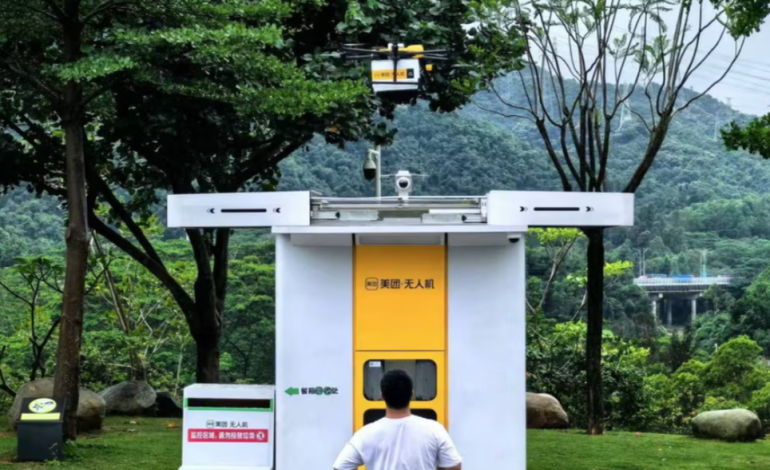In cities across China, artificial intelligence is becoming an increasingly visible part of everyday life, from food delivery drones in public parks to humanoid robots in entertainment and industrial settings, the Guardian reports.
These developments reflect China’s growing emphasis on “embodied AI” — the integration of artificial intelligence into physical machines — as the country accelerates efforts to modernize its economy, address demographic challenges, and strengthen global technological competitiveness.
In Shenzhen’s Central Park, for example, residents can now receive drone-delivered meals via “airdrop cabinets” operated by Meituan, the country’s largest food delivery platform. These drones are designed to cut delivery times and operate independently of human couriers, dropping off orders in secure lockers that can be accessed using the recipient’s phone number. While minor issues like food temperature persist, the service highlights how rapidly autonomous technology is being deployed at a consumer level.
This is just one example of China’s growing investment in robotics and AI. In recent years, geopolitical tensions, trade restrictions, and a slowing domestic economy have prompted Beijing to double down on high-tech innovation. Chinese leaders, including President Xi Jinping and Premier Li Qiang, have publicly prioritized AI and robotics as part of a national strategy to boost productivity, enhance military capabilities, and ensure economic resilience amid shifting global dynamics.
The emphasis on “embodied AI” — AI with a physical presence — has led to government funding initiatives, such as a 60 million yuan (approximately £6.4 million) investment in innovation centers in Guangdong province. Shenzhen, often referred to as China’s “drone capital,” has benefited from relaxed drone regulations, enabling a booming “low-altitude economy” that regulators predict could quintuple in value over the next decade.
Humanoid robots are another key area of growth. During this year’s Spring Festival Gala, watched nearly 17 billion times, humanoid robots manufactured by Unitree performed a choreographed dance, demonstrating growing sophistication in AI-powered movement. More recently, a half-marathon featuring both human and robot participants was held on the outskirts of Beijing, further showcasing advances in robotics.
Experts say that breakthroughs in reinforcement learning — where robots are trained through experience rather than pre-programmed models — have drastically shortened development cycles. This shift is enabling companies to bring AI-integrated robots to market faster than before, making tasks like automated manufacturing, surveillance, and even food preparation increasingly feasible.
Meanwhile, China’s AI sector received a boost earlier this year with the release of DeepSeek’s R1 large language reasoning model, which rivaled Western counterparts in performance and came at a significantly lower cost. The open-source nature of R1, developed using less advanced chips, offers broader accessibility for domestic firms and underscores China’s intent to reduce reliance on foreign semiconductor technology.
Despite these advancements, challenges remain. Robotics that aim to mimic human behavior require large datasets, especially for physical tasks like walking, grasping objects, or navigating complex environments. These demands complicate efforts to develop fully humanoid machines. While some robots, like those produced by UBTech, are already working in car factories, others remain in experimental or promotional stages.
Autonomous vehicles, another focus area, are not yet widespread. Companies like Baidu operate robotaxi fleets in limited areas, but practical issues — such as restricted service zones and long wait times — hinder broad adoption. Similarly, while robotic surveillance buggies are deployed in some public spaces, the much-discussed “robocops” are largely absent from daily life.
Still, sentiment around China’s AI sector is increasingly optimistic. As traditional economic engines like real estate falter, local governments are pivoting toward technology as a new growth driver. Business leaders report renewed confidence, buoyed by signs of policy support and high-profile meetings between tech entrepreneurs and central leadership.










The latest news in your social feeds
Subscribe to our social media platforms to stay tuned